| Overview |
The General Page contains the following sections:

To modify any of the general fields, click the Edit toolbar button.

This will place the fields in an edit mode and allow the user to set field values.

To cancel the editing mode, click the Cancel toolbar button.

To apply any field value changes, click the Save Settings toolbar button.

|
 |
Change Numbers |
Top |
|
Change Numbers represent the key field by which all change information is tracked.
Each Change will have a unique Change number.
Change numbers can be manually assigned by typing directly into the Number field, or automatically generated by the system.
When using the automatic Change number generator, Desktop will read the Change Number from the existing Changes in the system (based on the selected Change Type).
To use the Automatic Change Number Generator, first select a Change Type.
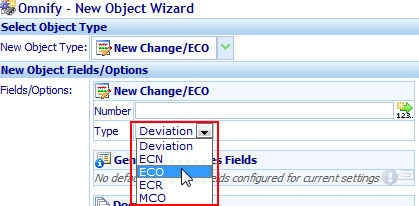
To retrieve the next Change number you can click the Get Next Number icon.

|
 |
Change Types |
Top |
|
Changes are defined by a Change Type, i.e.: ECR, ECO, ECN, MCO, Deviation, etc.
You can set/modify the change type by selecting from the Type drop list.

Change Type options are defined in the Administrator.
Change Types can have different numbering scheme, default signoff/workflow, revision options, default reason, and default description fields.
|
|
|
The Priority setting is a way that you can use to alert users to the importance of a specific Change/ECO.

Change Priority options are defined in the Administrator.
|
 |
Reason for Change |
Top |
|
The Reason for Change field is an open text field.
You can type in any characters and use carriage returns in this field.

You can also use the right mouse button pop-up menu commands.
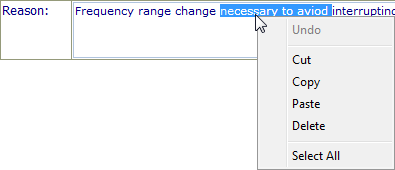
|
 |
Description of Change |
Top |
|
The Description of Change field is an open text field.
You can type in any characters and use carriage returns in this field.

|
 |
Custom Fields |
Top |
|
You can create Custom fields that will be displayed on the General page of the Change/ECO form.
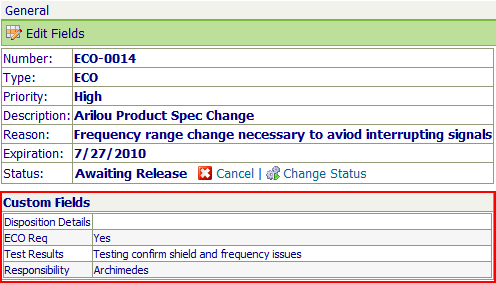
Custom fields are defined in the Administrator and can be open text fields or pick list options.
|
|
|
Projects associations provide you with a way to link Changes and projects for searching, classification, signoff workflows, and/or permission purposes.
You can define multiple projects for any Change, and multiple Changes can appear under the same project.
Projects are associated to Changes on the General page of the Change form.
To add a project, select the desired project from the All Projects list and then click the Add > button.
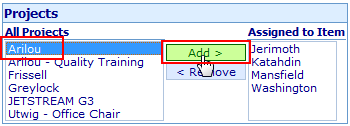
To remove a project, select the desired project from the Assigned to Item list and then click the < Remove button.
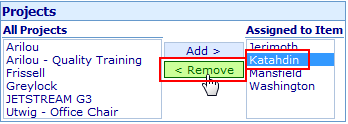
Clicking the project name hyperlink will open the project.

|
 |
Business Units |
Top |
|
Business Unit associations provide you with a way to link Changes and business units for searching, classification, signoff workflows, and/or permission purposes.
You can define multiple business units for any Change, and multiple Changes can appear under the same business unit.
Business Units are associated to Changes on the General page of the Change form.
To add a Business Unit, select the desired Business Unit from the All Business Unit list and then click the Add > button.

To remove a Business Unit, select the desired Business Unit from the Assigned to Item list and then click the < Remove button.

|
 |
Status Field |
Top |
|
The Status field will indicate the internal status of the Change/ECO (such as: Draft, Pending, Awaiting Release, Released, etc.).
While the Change/ECO is still pending, you will be able to update the status and release the change by clicking the Change Status hyperlink.
This will display the Change Status dialog box.

The Update Status drop list will contain options depending on the current status.

Selecting an option will allow you to then update the status.


Refer to the Releasing Changes for more information on releasing Changes/ECOs.
|